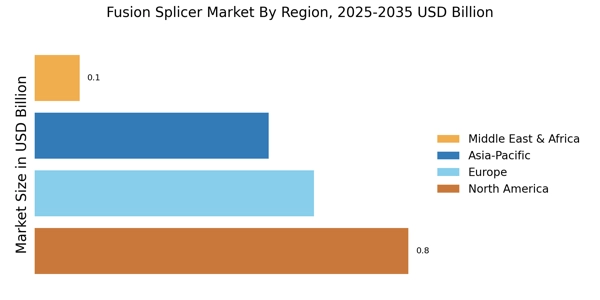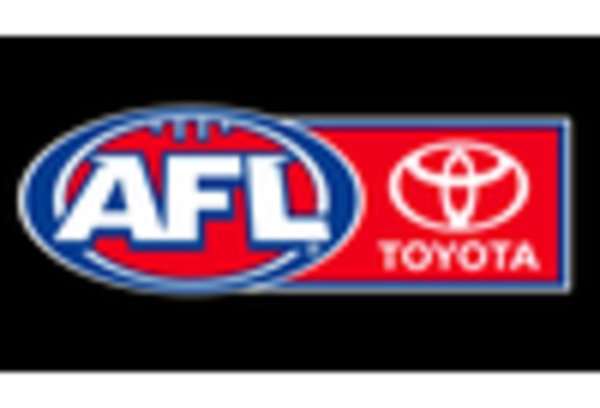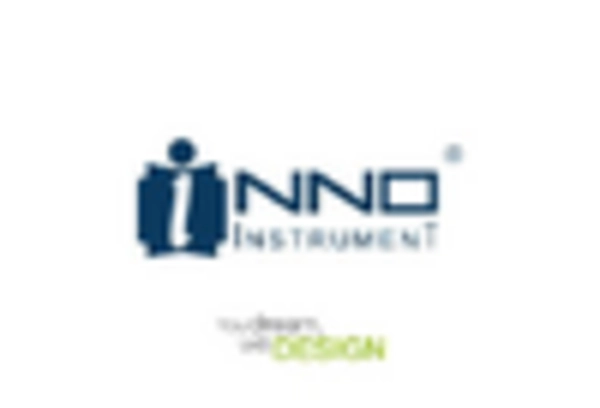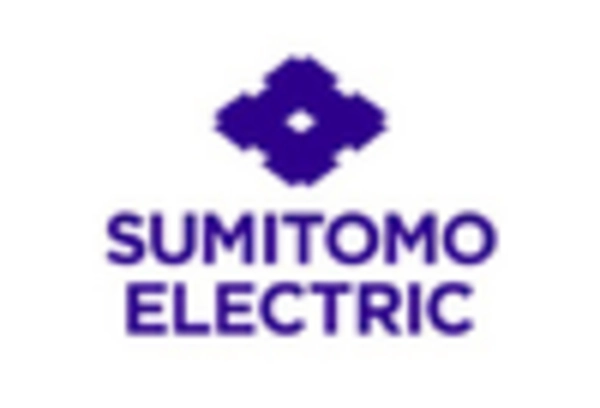The Fusion Splicer Market is currently characterized by a dynamic competitive landscape, driven by technological advancements and increasing demand for high-speed data transmission. Key players such as Fujikura (Japan), Sumitomo Electric (Japan), and Corning (US) are at the forefront, each adopting distinct strategies to enhance their market positioning. Fujikura (Japan) focuses on innovation, particularly in developing advanced splicing technologies that cater to the growing fiber optic market. Sumitomo Electric (Japan) emphasizes regional expansion, targeting emerging markets in Asia and Africa to capitalize on the rising demand for telecommunications infrastructure. Corning (US), on the other hand, is heavily investing in digital transformation initiatives, aiming to streamline operations and improve customer engagement through enhanced digital platforms. Collectively, these strategies contribute to a competitive environment that is increasingly centered around technological prowess and market responsiveness.
In terms of business tactics, companies are localizing manufacturing to reduce costs and improve supply chain efficiency. This approach is particularly evident in the Fusion Splicer Market, which is moderately fragmented, with several players vying for market share. The collective influence of these key players shapes the market structure, as they leverage their operational strengths to optimize production and distribution channels. This localized approach not only enhances competitiveness but also allows for quicker responses to regional market demands.
In August 2025, Fujikura (Japan) announced the launch of its latest fusion splicer model, which incorporates AI-driven features to enhance splicing accuracy and speed. This strategic move is significant as it positions Fujikura as a leader in innovation, potentially attracting customers seeking cutting-edge technology. The integration of AI into their products may also set a new standard in the industry, compelling competitors to accelerate their own technological advancements.
In September 2025, Sumitomo Electric (Japan) entered into a strategic partnership with a leading telecommunications provider in Southeast Asia to enhance fiber optic network deployment. This collaboration is crucial as it not only expands Sumitomo's market reach but also aligns with the growing demand for robust telecommunications infrastructure in the region. Such partnerships are likely to bolster their competitive edge by ensuring a steady demand for their fusion splicing solutions.
In October 2025, Corning (US) unveiled a new digital platform aimed at optimizing supply chain management for its fusion splicer products. This initiative reflects Corning's commitment to digital transformation and operational efficiency. By enhancing supply chain reliability, Corning positions itself to better meet customer needs and respond to market fluctuations, thereby reinforcing its competitive stance in the market.
As of October 2025, the Fusion Splicer Market is witnessing trends that emphasize digitalization, sustainability, and the integration of AI technologies. Strategic alliances are increasingly shaping the competitive landscape, enabling companies to pool resources and expertise to address market challenges. Looking ahead, it appears that competitive differentiation will evolve from traditional price-based competition to a focus on innovation, technological advancements, and supply chain reliability. This shift suggests that companies that prioritize these aspects are likely to thrive in an increasingly complex market environment.

















Leave a Comment